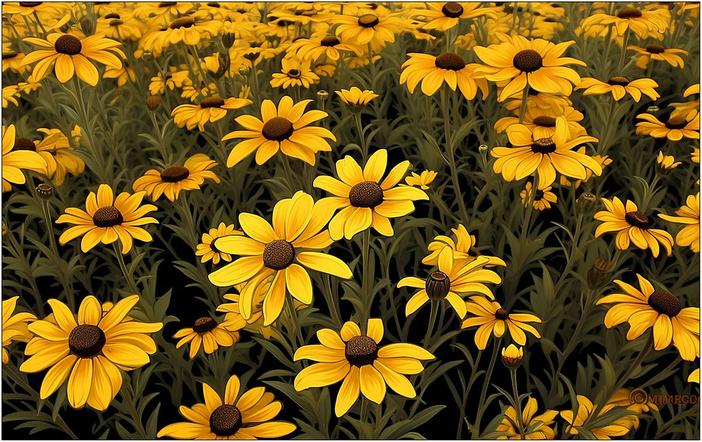Orange Coneflower
(Rudbeckia fulgida var. fulgida)
Orange Coneflower (Rudbeckia fulgida var. fulgida)
/
/

manuel m. v.
CC0 1.0
Image By:
manuel m. v.
Recorded By:
Copyright:
CC0 1.0
Copyright Notice:
Photo by: manuel m. v. | License Type: CC0 1.0 | License URL: https://creativecommons.org/publicdomain/zero/1.0/ | Uploader: M. Martin Vicente | Publisher: Flickr























Estimated Native Range
Summary
Rudbeckia fulgida var. fulgida, commonly known as Orange Coneflower, is a herbaceous, clump-forming perennial native to open woodlands, meadows, and prairies of the Eastern United States. It typically reaches a height of 2-3 feet (0.6-0.9 meters) and a width of up to 1 foot (0.3 meters). The plant features lance-shaped, dark green leaves and daisy-like flowers with a prominent, raised central cone that is dark brown to black, surrounded by bright yellow to orange petals. Flowering occurs from late summer to early fall, and the blooms are highly attractive to pollinators and beneficial insects.
Orange Coneflower is valued for its long blooming period and its ability to thrive in a variety of garden settings, including borders, naturalized areas, and cottage gardens. It is relatively low maintenance, tolerating poor soils and drought once established. The plant prefers full sun but can tolerate light shade, and it grows best in well-drained soils. Regular deadheading can encourage more blooms. While generally pest-free, it can occasionally suffer from powdery mildew or leaf spot.CC BY-SA 4.0
Orange Coneflower is valued for its long blooming period and its ability to thrive in a variety of garden settings, including borders, naturalized areas, and cottage gardens. It is relatively low maintenance, tolerating poor soils and drought once established. The plant prefers full sun but can tolerate light shade, and it grows best in well-drained soils. Regular deadheading can encourage more blooms. While generally pest-free, it can occasionally suffer from powdery mildew or leaf spot.CC BY-SA 4.0
Plant Description
- Plant Type: Herb
- Height: 2-3 feet
- Width: 0.667-1 feet
- Growth Rate: Moderate
- Flower Color: Yellow
- Flowering Season: Summer, Fall
- Leaf Retention: Deciduous
Growth Requirements
- Sun: Full Sun
- Water: Low, Medium
- Drainage: Medium
Common Uses
Bee Garden, Bird Garden, Butterfly Garden, Deer Resistant, Drought Tolerant, Groundcover, Hummingbird Garden, Low Maintenance, Rabbit Resistant, Showy Flowers, Street Planting
Natural Habitat
Native to open woodlands, meadows, and prairies of the Eastern United States
Other Names
Common Names: Perennial Coneflower , Gewöhnlicher Sonnenhut
Scientific Names: Rudbeckia fulgida var. fulgida
GBIF Accepted Name: Rudbeckia fulgida var. fulgida